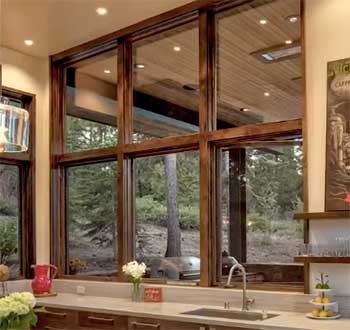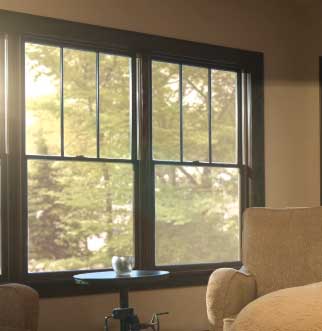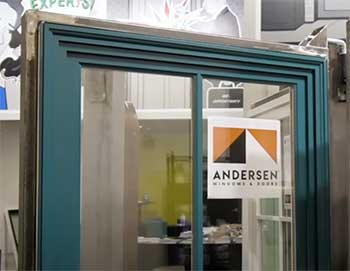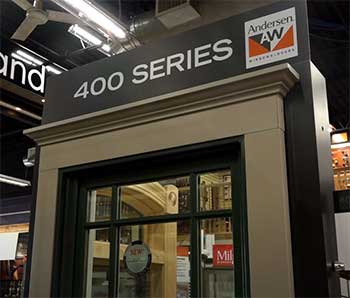If you’re in the market for new windows, you’ve probably come across two big names: Weather Shield and Andersen. Both companies have been around for decades and are known for making high-quality windows. But which one is right for your home?
In this comprehensive guide, we’ll compare Weather Shield and Andersen windows side-by-side, looking at key factors like materials, energy efficiency, cost, warranties, and more.
By the end, you’ll have all the information you need to decide whether Weather Shield or Andersen is the best option for your next window replacement or installation project.
A Brief Comparison Table
| Factor | Weather Shield | Andersen |
| Frame Materials | Wood, aluminum-clad wood, vinyl, fiberglass | Wood, Fibrex composite, vinyl |
| Glass Options | Double pane, triple pane | Double pane, triple pane |
| Energy Efficiency | Excellent, meet ENERGY STAR standards | Excellent, meet ENERGY STAR standards |
| Styles | All popular styles, historic styles | All popular styles plus smart home tech |
| Warranties | 10-20 years on components | 20-Limited lifetime on components |
| Manufacturing Location | Medford, Wisconsin | Bayport, Minnesota |
| Service Reputation | Mixed based on local dealer | Positive company-backed |
| Lead Times | Can be lengthy for custom windows | Can be lengthy during peak season |
| Look & Aesthetic | Historically accurate for old homes | Contemporary and sleek style |
Overview of Weather Shield and Andersen
First, let’s get familiar with each of these window manufacturers.
Weather Shield Windows

Weather Shield has been making windows since 1926.
They’re headquartered in Medford, Wisconsin and make a variety of window types including double hung, casement, awning, sliding, and specialty windows.
Some key facts about Weather Shield:
- Owned by Cornerstone Building Brands, a major building products company
- Windows are made in the USA
- Offer high-quality wood, aluminum-clad wood, vinyl, and fiberglass window lines
- Known for custom-designed windows and historic restorations
- Offer triple pane glass and advanced frame materials for energy efficiency
- Provide limited lifetime warranties on many products
Andersen Windows
Andersen Windows was founded in 1903 and is headquartered in Bayport, Minnesota. They are one of the largest and most recognized window brands in the US.
Here’s an overview of Andersen:
- Privately owned company
- Manufacture a huge variety of window styles including double hung, casement, awning, gliding, bay/bow, specialty windows, and more
- Make window frames from wood, vinyl, fiberglass composite
- Known for innovation – developed the first vinyl window in the 1990s
- Offer high energy efficiency ratings and triple pane glass options
- Provide limited lifetime warranties on most window lines
- Windows are assembled in the USA
Key Differences Between Weather Shield And Andersen Windows
Now that we’ve introduced both companies, let’s dig into the details of their window collections.
Window Lines and Materials
The materials used for the window frame and sash are an important factor that impact appearance, durability, energy efficiency, and cost. Here’s an overview of the main window collections from Weather Shield and Andersen:
Weather Shield Window Lines
- Wood/Aluminum-Clad Wood: Weather Shield’s wood windows feature mortise-and-tenon joinery with premium clear pine, oak, maple, or mahogany interior. The aluminum cladding on the exterior resists rotting, swelling, and warping. Many styles are available including double hung, casement, awning, and more.
- Vinyl: Weather Shield vinyl windows are built with a multi-chambered frame and sash for insulation. The vinyl color is molded through the frame for greater durability. Their vinyl line includes double hung, sliding, casement, awning, and specialty windows.
- Fiberglass: For high-performance and low-maintenance, Weather Shield offers fiberglass windows. The fiberglass is 8x stronger than vinyl. Options include casement, awning, double hung, and sliding windows.
Andersen Window Lines

- Wood: Andersen is known for their finely crafted wood windows featuring pine, maple, oak, and other wood species. Wood window units offer unparalleled beauty and structural integrity.
- Fibrex: This proprietary composite pairs the strength and beauty of wood on the interior with a durable, low-maintenance fiberglass exterior. Available in many styles.
- Vinyl: For affordability and energy-efficiency, Andersen makes a full line of vinyl-framed windows including double hung, slider, casement, awning, picture windows, and specialty shapes.
- 100 Series: Andersen’s most affordable vinyl window focused on performance and energy savings. Available in many common styles and colors.
So in summary, both companies offer wood, aluminum-clad wood, vinyl, and fiberglass window lines in a variety of operating styles. Andersen also offers their exclusive Fibrex composite material.
Energy Efficiency
With rising energy costs, you’ll want windows that help insulate your home. Here’s how Weather Shield and Andersen compare:
- Insulating Glass: Both brands offer high-performance double pane glass units as standard, with triple pane glass available for maximum efficiency. Most units use argon gas fills and low-E coatings to reduce heat loss.
- Weather Stripping: Weather Shield and Andersen use compression seals, bulbs, and piles to prevent air infiltration around the sash and frame.
- Frame Design: Weather Shield windows promote thermal efficiency through multi-chambered frame and sash profiles that reduce conduction. Andersen uses proprietary technologies like Thermal-Smart framing to slow heat transfer.
- Testing: Many Weather Shield and Andersen windows meet ENERGY STAR requirements. Performance testing data for air infiltration, heat loss, and condensation resistance is available.
- Performance Ratings: Based on glass configurations and frame materials, Weather Shield and Andersen windows can achieve U-Factors as low as 0.17 and 0.18 respectively, indicating outstanding thermal resistance.
So in terms of energy performance, Weather Shield and Andersen are comparable, offering excellent insulating glass packages and advanced frame materials to create windows with low U-Factors and ENERGY STAR ratings.
Costs
Window pricing depends on the size, operating style, frame material, glass package, and customizations selected. Here are some general guidelines:
- Wood windows – Andersen wood windows range from $$ to $$$$. Weather Shield wood units are $$$ to $$$$.
- Vinyl windows – Andersen vinyl starts at $$ for the 100 Series up to $$$ for higher end collections. Weather Shield vinyl runs from $$ to $$$.
- Fiberglass windows – These are premium products from both brands, usually ranging from $$$ to $$$$.
- Aluminum-clad wood – Weather Shield’s aluminum-clad wood options run from $$$ to $$$$ for typical sizes.
- Triple pane glass – Adding triple pane glass upgrades cost around $$ to $$$ per window.
In terms of overall price for a mid-range, good performing window, Weather Shield and Andersen are comparable, starting around $$ to $$$ installed. More premium windows with exotic woods or top end technology can cost more. Always get detailed quotes for your exact project requirements.
Warranties
It’s reassuring to buy windows backed by strong warranties. Here’s how the warranties compare between brands:

- Glass – Weather Shield and Andersen both provide 20-year warranties on glass seal failures.
- Vinyl – Vinyl components have 10-year (Weather Shield) and 20-year (Andersen) coverage.
- Wood – Weather Shield provides 10 years of coverage on wood components while Andersen offers 20 years.
- Exterior aluminum cladding – Weather Shield warrants aluminum clad exterior for 20 years.
- Hardware – Both companies include 10-year warranties on mechanical hardware.
- Labor – Andersen offers more inclusive labor coverage at 2 years, vs 1 year from Weather Shield.
The limited lifetime warranties on vinyl, wood, and other components cover defects, not normal wear and tear. Overall, warranties are strong and quite comparable between the two brands.
Design Options
Both Weather Shield and Andersen offer outstanding design flexibility if you want windows that are unique and match your home’s style.
- Styles – Available in all the most popular operating styles including single/double hung, casement, awning, sliding, picture, bay, bow, garden, and more. Weather Shield also provides pivot windows.
- Shapes – Choose from common rectangular windows, or complex shapes like trapezoids, triangles, hexagons, full circles, arcs, and more.
- Sizes – Scale windows to fit everything from small bathrooms to towering walls. Andersen offers more very large window sizes. Weather Shield specializes in historically accurate sizing.
- Finishes – Select from standard vinyl colors or unlimited interior and exterior paint or stain options on wood windows. Andersen’s Fibrex material also has color options.
- Old World Styling – Weather Shield is known for period-accurate windows matching antique homes with details like wavy glass, simulated divided lites, and custom hardware.
- Smart Options – Andersen offers technology integrations for comfort, security, and automation.
Overall, both companies give you tremendous design flexibility for a custom window look. Focus on Weather Shield for historic homes, Andersen for smart features.
Additional Factors To Consider
Here are some other factors that can help distinguish Weather Shield vs Andersen windows:
- Where they’re made – Weather Shield manufactures in Wisconsin while Andersen makes windows in Minnesota. Quality is excellent from both factory locations.
- Installation – Weather Shield relies on independent dealers to install, while Andersen has an in-house certified installation division. Both should provide quality installation. Get references to compare builders.
- Service – With independent dealers, Weather Shield service experiences can vary. Andersen’s company-backed approach often gets higher service marks. Check online reviews.
- Lead times – Weather Shield custom and larger windows often have longer lead times. Make sure to account for longer delivery timelines of 2 months or more.
- Historic aesthetic – For homes with traditional architecture, Weather Shield nails the historic look while still offering modern performance. Andersen windows have a more contemporary style.
Be sure to factor in these additional considerations as you make your window brand decision.
Weather Shield And Andersen Windows: Pros and Cons
To summarize the key differences, here’s an overview of the major pros and cons of Weather Shield and Andersen windows:
Weather Shield Pros
- Huge selection of wood window styles with lumber from sustainable forests
- Aluminum-clad wood options offer low-maintenance outdoor durability
- Vinyl and fiberglass lines provide excellent thermal efficiency
- Made in America at their Wisconsin factory
- Industry-leading historic restorations with period-accurate styling
- Offer the warmth and beauty of real wood interiors
- Provide custom windows in many shapes and sizes
- Strong warranties back products for defects
- Very positive reputation among window replacement contractors
Weather Shield Cons
- More limited smart home tech and automated integration
- Shorter labor warranties than some brands
- Mixed customer service reviews depending on local dealer
- Lead times can be lengthy for custom orders
- Higher cost than basic builder-grade vinyl windows
Andersen Pros

- One of the most recognized and trusted window brands
- Huge product selection including exclusive Fibrex composite material
- Excellent thermal performance from Fibrex and vinyl lines
- Custom windows available in many shapes, sizes, and colors
- Crafted wood interiors provide natural beauty
- Limited lifetime warranties on glass, vinyl, and Fibrex
- Longer labor warranty coverage than some brands
- Positive reviews for customer service
- Advanced smart home features available
Andersen Cons
- More contemporary styling not suited to some historic homes
- Lower-end vinyl lines have some durability complaints
- Mixed reviews on 100 Series vinyl windows for quality
- Shorter glass warranties than some brands
- Very high-end custom windows are costly
- Lead times can also be lengthy during peak season
Frequently Asked Questions (FAQ)
Yes, Weather Shield is considered an excellent quality window brand. They offer advanced materials like aluminum-clad wood, fiberglass, and premium vinyl that perform well and resist wear. Multiple independent testing labs have rated various Weather Shield windows highly for air and water infiltration resistance, structural strength, durability, and other metrics. While not the cheapest vinyl window, Weather Shield provides a noticeable jump in quality over basic contractor-grade windows.
In the 1990s and early 2000s, there were class action lawsuits brought against Weather Shield related to wood rot and deterioration in some of their older wood and aluminum-clad windows. The lawsuits centered around the use of untreated Douglas fir in certain products that was prone to rot when exposed to moisture. These class action suits were settled in 2003 and 2007 with Weather Shield agreeing to pay compensation, under a claims process, to homeowners that experienced these wood rot failures in windows installed prior to 1991. Windows produced after the early 1990s should not experience the same issues.
Some window brands considered comparable or even superior to Andersen in terms of quality are: Pella, Marvin, Milgard, Jeld-Wen, Ply Gem, Simonton, PGT, Weather Shield.
Key factors like materials used, manufacturing quality, technology, energy efficiency ratings, and warranties determine the overall quality and performance of windows. Premium wood window makers like Marvin compete closely with Andersen for top quality. Brands like Milgard and Weather Shield are also seen as excellent mid to high-end vinyl window manufacturers.
When properly installed and maintained, Weather Shield windows are expected to have a lifespan of 30-40 years or more. Their wood windows and aluminum clad units, when well-sealed and finished, can go 50+ years before replacement is needed. Vinyl and fiberglass frames often last 25-35 years. The insulating glass units may need replacement at some point due to seal failure but the frames themselves hold up very well over time. Making sure the exterior has proper moisture protection through finishes and overhangs helps Weather Shield windows achieve maximum lifespans.
Closing Remarks
In summary, both Weather Shield and Andersen offer excellent quality windows but differ in their visual style, warranties, pricing, and a few other areas. Weather Shield excels at historically accurate windows while Andersen is known for sleek modern styling and smart home tech.
Let me know if you need any clarification or have additional questions.

